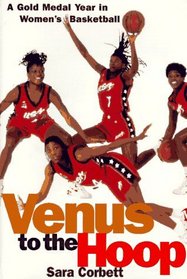Search -
Venus to the Hoop : A Gold Medal Year in Women's Basketball
Venus to the Hoop A Gold Medal Year in Women's Basketball
Author:
They played for the gold. They played for the glory. And they played for the future of women athletes everywhere. — Few of the millions of viewers who witnessed the joyous celebration of the victorious American women's basketball team at the 1996 Atlanta Olympics could know the intense human drama, the sweat and anxieties, t... more »
Author:
They played for the gold. They played for the glory. And they played for the future of women athletes everywhere. — Few of the millions of viewers who witnessed the joyous celebration of the victorious American women's basketball team at the 1996 Atlanta Olympics could know the intense human drama, the sweat and anxieties, t... more »
ISBN-13: 9780385486828
ISBN-10: 0385486820
Publication Date: 6/1/1997
Pages: 288
Rating: 1
ISBN-10: 0385486820
Publication Date: 6/1/1997
Pages: 288
Rating: 1
2 stars, based on 1 rating
Genres:
- Sports & Outdoors >> Basketball >> General
- Sports & Outdoors >> Miscellaneous >> Olympic Games
- Sports & Outdoors >> General





